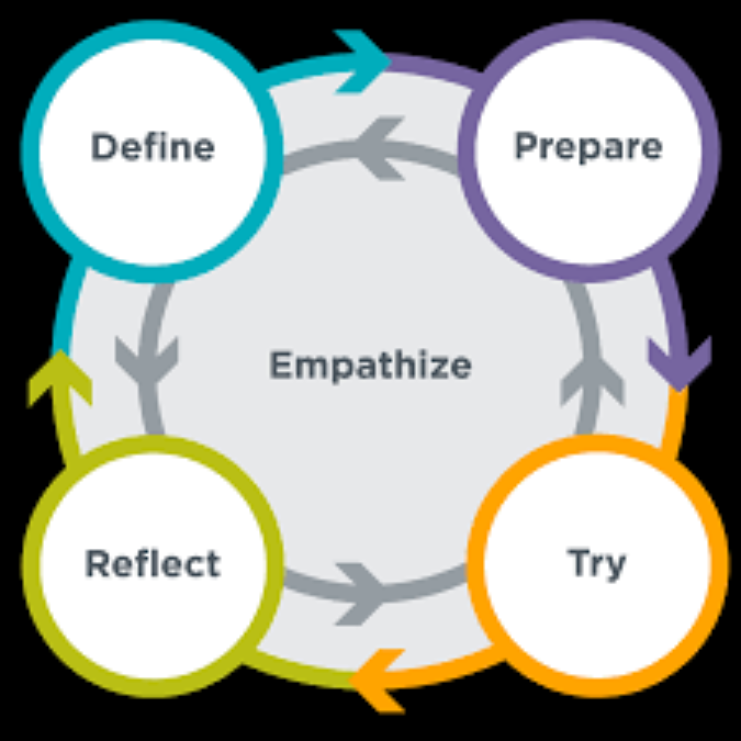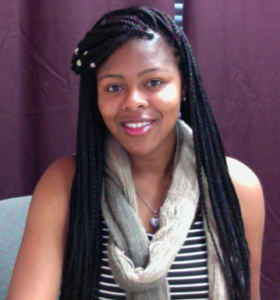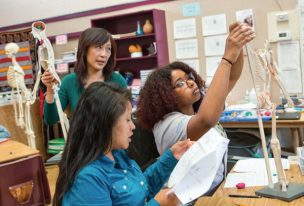
The Evolution of Reflection: Returning to the Why
At the beginning of the school year, I asked myself the question, “What do I value in my computer science classroom?” I knew I valued the process of creating over a final product, but I wondered how I was going to get my students to feel the same. After some initial explorations early in the year, I realized that in order to value process over product, my students needed to feel the power of their own voices during the problem solving process. I decided that one area where I could provide meaningful opportunities for them to express their voices was by giving them opportunities to reflect on their work and their learning.
I began to tinker with the student handout that took them through the problem solving process. For each project, the handout followed the same structure: DEFINE (our goal for the project), PREPARE (space for students to sketch their ideas), TRY (the code needed), and REFLECT (various prompts). Time and again, I tinkered with the REFLECT prompts, trying to get closer to prompts that would support them to reflect in meaningful detail about their learning. With the help of my colleagues in our Mills Teacher Scholars inquiry group, I was able to name what I was looking for in my students’ reflections: I wanted students to articulate the new skills they learned and identify which of their mindsets enabled them to finish their projects. But despite all my tinkering with the REFLECT prompts, I wasn’t getting the detailed reflections that I was hoping for.
Before tinkering with the prompt yet again, a colleague in my inquiry group asked me, “Do you know whether you and your students share an understanding of the purpose of reflection?” I decided to ask students, “Why do you think there is a REFLECT section for each project we work on?” I needed to see if my idea of why I have students REFLECT was aligned with what the students thought the purpose of reflection was. Here are some of their responses that met my indicators of success:
- “I think there is a REFLECT section for each project because it reminds the student of what they’ve learned and went over with the lesson/project.”
- “I think there is REFLECT section because Ms. Parnell can give examples for the next period so they know what to do.”
- “I think there is a REFLECT section for each project because it could give advice to other people and when you are struggling the teacher will know what you struggle with and they may be able to help you.”
After reading through all the students responses and looking back at the many iterations of the student handout, and the synthesis of my thinking with my inquiry group, I realized that my students could articulate the purpose of the REFLECT section, but students were not giving detailed responses to the prompts because I had not really modeled what exemplar responses looked like.
I remember sitting in a Mills Teacher Scholars inquiry session and hearing, “experiences shift mindsets; mindsets deepen experiences.” It was not about tinkering with the tool, but about deepening students’ understanding of how to use the tool and reflect meaningfully. My students’ reflections helped me realize that I needed to create the space for them to practice what I was expecting from them and that in turn would improve how they engaged with the tool.
As I start to think about next school year, I believe I have a strong template that I can use to get students to value the process of creating over their final product and to reflect meaningfully by using the problem solving process. I also plan to devote time to allow for co-creations of exemplar responses for each section of the handout to ensure that students shift from a “jump right in without a plan” mindset to a “design thinking” mindset. I believe that by continuing to cultivate student voice through frequent opportunities to reflect will lead to students having more confidence in explaining their thinking ideas and showing off their projects.
 I am a graduate of Bryn Mawr College, an all women’s college in Pennsylvania where I majored in Mathematics with a minor in Education. Born and raised in Los Angeles, I moved to the Bay Area in 2011 to begin my teaching career at Bret Harte Middle School. I have taught 8th Grade Algebra, Math 6, and Math 8/Compression. I currently teach 6th-9th Grade Computer Science, Girls Who Code and Animation.
I am a graduate of Bryn Mawr College, an all women’s college in Pennsylvania where I majored in Mathematics with a minor in Education. Born and raised in Los Angeles, I moved to the Bay Area in 2011 to begin my teaching career at Bret Harte Middle School. I have taught 8th Grade Algebra, Math 6, and Math 8/Compression. I currently teach 6th-9th Grade Computer Science, Girls Who Code and Animation.

